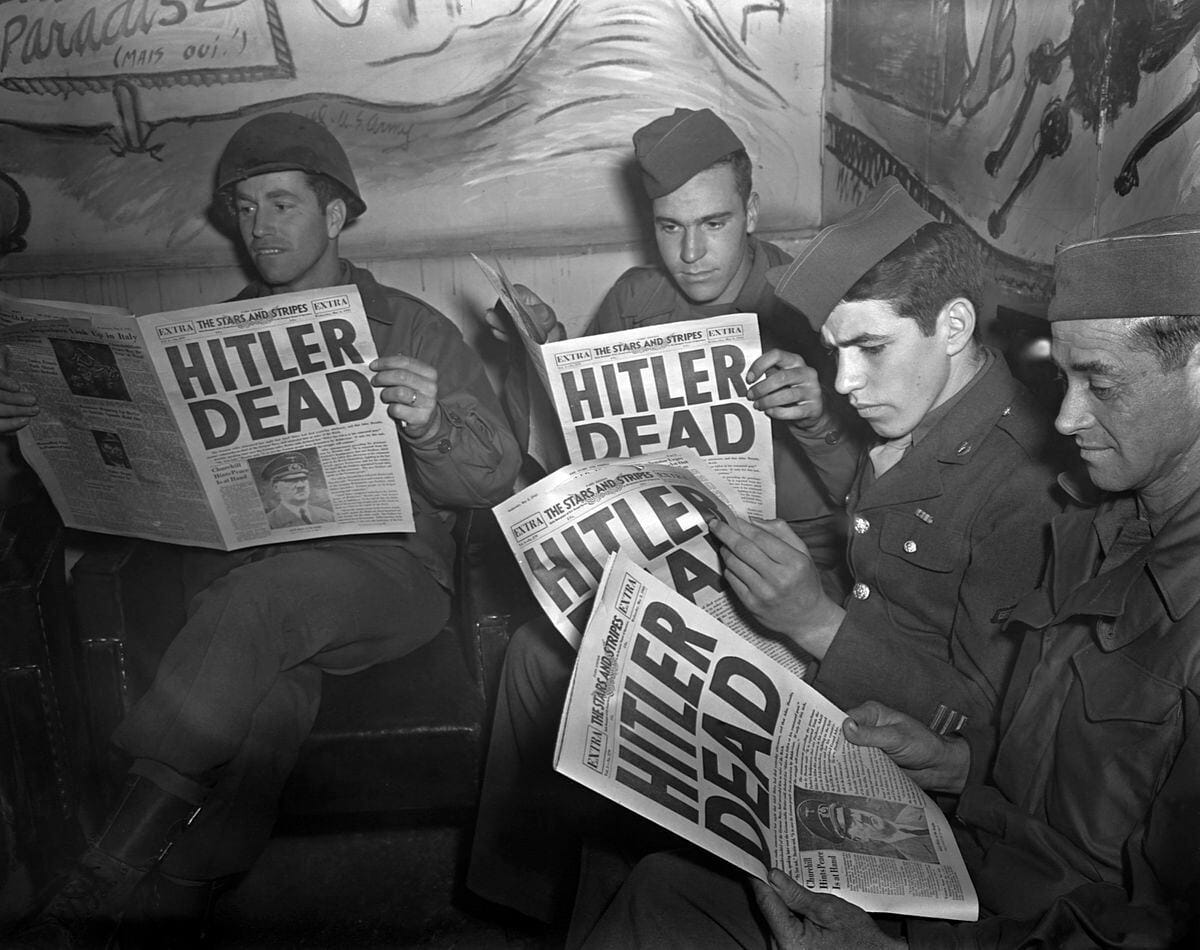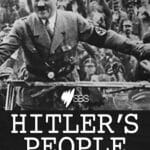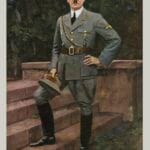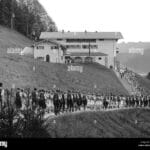The World Reacts: How Newspapers Announced Hitler’s Demise
On April 30, 1945, the world held its breath for confirmation. It took up to two days for global newspapers to confirm Adolf Hitler’s death, fueling uncertainty and speculation in the final hours of World War II. Newspapers, the primary source of information in the pre-digital age, became the voice of nations, reflecting the diverse reactions to the fall of the Third Reich.
“Hitler is Dead”: A Global Chronicle of Relief, Disbelief, and a Thirst for Justice
Imagine picking up your morning paper and being greeted with bold, full-page headlines proclaiming “Hitler is Dead.” The sense of relief was palpable, with many papers filled with expressions of triumph and hope for a brighter future. Allied newspapers didn’t hold back in celebrating victory and denouncing Nazi tyranny.
- “Germans put out the news everyone hopes is true” – Daily Express (UK)
- “Will rant no more” – Boston Daily Record (US)
However, initial reactions were often tempered with caution. Years of war and propaganda had fostered a sense of distrust, leading many publications to adopt a more measured tone until they could verify the news through multiple sources.
Beyond “Hitler is Dead”: How Newspapers Grappled with the Fall of the Third Reich
With Hitler gone, the world didn’t just stop at “The end.” Newspapers around the globe dove headfirst into what it all meant. The fall of the Nazi regime was HUGE news, and every country had its own story to tell, colored by their own experiences during the war.
Headlines Around the World:
- United States: “HITLER DEAD” splashed across the front page of The New York Times, leaving no doubt about the magnitude of the news. The Stars and Stripes, the newspaper for American soldiers, likely felt like it was announcing a victory lap for its readers: “Nazi Regime Ends: Hitler Dead; Fuehrer Shot Himself, Goebbels Succeeds.”
- United Kingdom: The Daily Express didn’t even try to hide it: “Germans put out the news everyone hopes is true: Hitler is Dead!” The Daily Mirror boldly went with “The War is Over!”
- Occupied Europe: The Dutch newspaper De Telegraaf, after years of living under Nazi rule, they just went for it: “Hitler Kaput!” In France, Le Monde, wanted to make sure everyone understood what this meant: “Hitler est Mort: Fin de la Guerre en Europe”.
Beyond the Headlines:
- Analysis and Opinions: Newspapers offered analysis, opinion pieces, and personal stories, providing insight into the significance and emotional impact of Hitler’s death. Some discussed what his demise meant for the future, while others shared personal stories of loss, liberation, or just plain relief.
- Unearthing the Truth: Newspapers were also starting to uncover the messy truth about the war and the Nazi regime. Rumors were flying, stories were changing, and it took time to piece everything together.
- Controversial Coverage: In Norway, Aftenposten published an obituary written by Knut Hamsun, a famous author and Nazi sympathizer. This sparked a huge controversy, highlighting the complex emotions surrounding the fall of the Third Reich.
The Power of the Press: How Newspapers Shaped History on V-E Day
Newspapers didn’t just announce Hitler’s death; they captured the human side of this pivotal moment. Stories emerged of joyous celebrations, of weary soldiers laying down their arms, of families torn apart by conflict daring to hope for reunion.
- The BBC’s Role: The BBC, for instance, played a pivotal role, broadcasting the news to a global audience. Historians suggest that Ernst Gombrich, a supervisor on the BBC’s German Monitoring team, was likely one of the first to translate the German announcement of Hitler’s death, enabling its rapid dissemination.
- “He wrote it out on bits of paper, which was a terrible thing to do because he might have muddled them up, and he had terrible handwriting,” says a former colleague of Gombrich.
- Chronicling the Aftermath: Newspapers transitioned from propaganda tools to chroniclers of the war’s aftermath, documenting the devastation, the Nuremberg trials, and the dawn of a new world order. They also exposed the horrors of the Holocaust, ensuring the world would never forget.
- Rare Images and Personal Stories: Local newspapers, in particular, provide a more intimate lens through which we can understand the diverse experiences of V-E Day across various communities. Imagine the thrill of unearthing a collection of rare photographs from that era. These images capture more than just the celebrations; they reveal the relief that washed over people, the grief for those lost, and the quiet moments of reflection.
Today, these newspapers are like historical treasures. They don’t just tell us about Hitler’s death, they give us a glimpse into how people felt, what they knew, and how they saw the future. It’s a reminder that history is complicated, full of different perspectives and stories waiting to be uncovered.
Exploring the Archives:
- Newspapers.com and RareNewspapers.com are like vast digital libraries, housing countless digitized newspapers from different times and places.
- The Library of Congress hosts the “Newspaper Navigator,” a searchable database of over 1.5 million historical newspaper images.
These online archives offer a unique opportunity to connect with the past on a personal level. We can lose ourselves in the stories of individuals who lived through those times, gaining a deeper understanding of how V-E Day reverberated through communities and shaped the world we know today.
Recommended Reading:
- Hitler Color Photo: Uncover captivating historical insights with our extensive color photo archive, revealing the hidden depths of the past.
- Henry George Gein: Dive into the macabre depths of Henry George Gein, a notorious figure whose crimes sent shockwaves through generations.













2 thoughts on “Hitler Dead: How Newspapers Around the World Reported the Fall of the Third Reich”
Comments are closed.